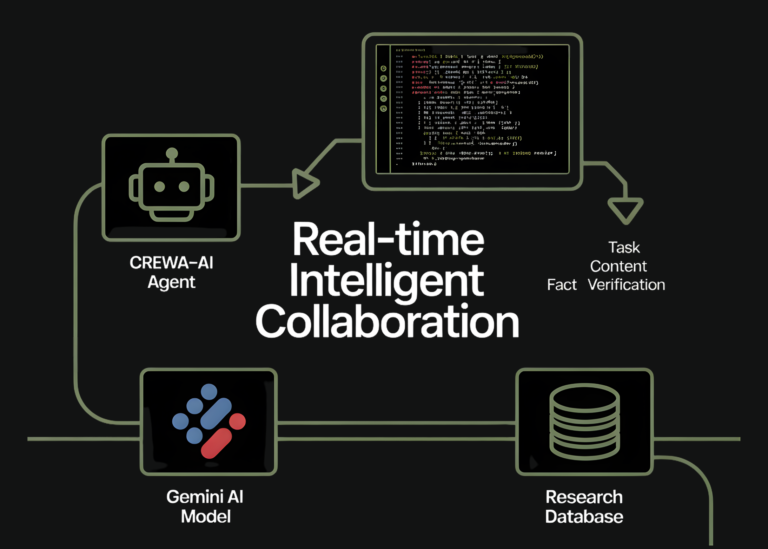AI Tools for Optimizing Supply Chain Logistics: A Game-Changer in Modern Business
In today’s hyperconnected global economy, supply chain logistics has become a critical differentiator for businesses. From managing inventory to ensuring timely deliveries, the efficiency of a supply chain directly impacts customer satisfaction, operational costs, and profitability. However, traditional supply chain methods often struggle with complexity, unpredictability, and the sheer scale of modern operations. Enter artificial intelligence (AI), a transformative force that is revolutionizing how companies plan, execute, and optimize their supply chains. By leveraging machine learning, predictive analytics, and automation, AI tools are enabling businesses to streamline operations, reduce costs, and enhance resilience. This article explores the role of AI in supply chain logistics, highlighting key tools and their applications.
The Evolution of Supply Chain Logistics
Supply chain logistics involves the management of the flow of goods, services, and information from raw materials to end consumers. Historically, this process relied on manual planning, static models, and historical data, which often led to inefficiencies such as overstocking, stockouts, delayed shipments, and higher operational costs. The rise of e-commerce, global sourcing, and real-time customer expectations has only intensified these challenges. Today, businesses face pressure to deliver faster, cheaper, and with greater accuracy, all while navigating disruptions like pandemics, geopolitical tensions, and climate events.
AI tools are addressing these pain points by introducing dynamic, data-driven solutions that adapt to changing conditions. By analyzing vast datasets and identifying patterns, AI enables supply chain managers to make informed decisions, reduce human error, and respond proactively to risks.
Key AI Tools and Their Applications in Supply Chain Logistics
1. Demand Forecasting and Predictive Analytics
Accurate demand forecasting is one of the most critical aspects of supply chain management. Overestimating demand leads to excess inventory, while underestimating it results in lost sales and dissatisfied customers. AI tools like SAP AI Business Services and IBM Watson Supply Chain use machine learning algorithms to analyze historical sales data, market trends, weather patterns, and even social media sentiment. These tools predict future demand with high precision, allowing companies to align production and procurement with actual needs.
For example, Walmart uses AI-powered forecasting to optimize restocking in its stores, reducing waste and ensuring popular items are always available. Similarly, Amazon’s recommendation engines, powered by AI, contribute to smarter inventory allocation by anticipating customer preferences.
2. Inventory Management Systems
AI-driven inventory management tools, such as Optimizely and Knotel, employ real-time data analytics to track stock levels, monitor supplier performance, and automate reordering. These systems use predictive demand models and deep learning to identify optimal inventory levels, minimizing holding costs and reducing the risk of shortages.
A notable example is Zebra Technologies’ AI-powered inventory solutions, which integrate with IoT sensors to provide real-time visibility into warehouse stock. This allows companies like Zara to maintain just-in-time inventory, ensuring fast turnover and reducing overstocking.
3. Route Optimization and Transportation Management
AI tools like Google’s OR-Tools and FourKites are transforming transportation logistics by optimizing delivery routes. These platforms use machine learning and geospatial data to account for traffic, weather, fuel costs, and delivery windows, reducing transit times and fuel consumption. For instance, UPS implemented AI-driven route optimization through its ORION (On-Road Integrated Optimization and Navigation) system, which saved over 100 million gallons of fuel annually by minimizing delivery miles.
Additionally, autonomous vehicles and drones powered by AI are emerging as solutions for last-mile delivery. Companies like Nauto and Wing by Alphabet are testing AI-guided delivery systems to cut costs and improve speed.
4. Supplier Risk Management and Sourcing
Managing a global supply chain involves navigating risks like supplier delays, quality issues, and geopolitical instability. AI tools such as Sovos and Tive analyze supplier data, monitor news feeds, and track geopolitical events to predict potential disruptions. Natural Language Processing (NLP) helps parse supplier contracts and performance metrics, enabling companies to identify high-risk vendors and diversify their supply base.
For example, Coupa Software uses AI to evaluate supplier reliability and suggest alternative vendors, ensuring continuity during crises.
5. Warehouse Automation and Robotics
AI-powered robotics and automation are reshaping warehouse operations. Tools like Kiva Systems (now Amazon Robotics) and Locus Robotics use AI to manage inventory, pick and pack orders, and optimize warehouse layouts. Computer vision and robotic process automation (RPA) enable real-time tracking of goods, reducing errors and labor costs.
AI also supports autonomous mobile robots (AMRs) that navigate warehouses without human intervention, improving efficiency. For instance, Lockheed Martin uses AI-driven robots to manage inventory in its facilities, cutting down on manual labor and increasing accuracy.
6. Predictive Maintenance and Asset Management
Maintenance downtime can derail supply chain operations. AI tools like Pymetrics and Siemens’ MindSphere use predictive analytics to monitor equipment health and predict failures before they occur. By analyzing sensor data from machines, these systems ensure that transportation and manufacturing assets operate smoothly, reducing unexpected delays.
For example, Rolls-Royce employs AI to monitor jet engines and predict maintenance needs, ensuring timely repairs and minimizing disruption.
Benefits of AI in Supply Chain Logistics
The integration of AI into supply chain logistics offers numerous advantages:
- Cost Reduction: By optimizing routes, inventory, and supplier relationships, AI helps businesses cut operational expenses.
- Enhanced Efficiency: Automation and real-time data processing reduce manual tasks and accelerate decision-making.
- Improved Resilience: Predictive analytics and risk monitoring allow companies to anticipate and mitigate disruptions.
- Sustainability: AI minimizes waste, reduces fuel consumption, and supports eco-friendly practices through smarter resource allocation.
- Scalability: AI tools can handle complex, large-scale operations, making them ideal for global supply chains.
Challenges and Considerations
While AI presents significant opportunities, its adoption is not without challenges.
- Data Quality: AI relies on accurate, real-time data, which can be difficult to obtain in fragmented supply chains.
- Integration Complexity: Legacy systems often struggle to integrate with AI tools, requiring substantial investment in infrastructure.
- Initial Costs: Implementing AI solutions can be expensive, especially for small and medium-sized enterprises (SMEs).
- Skill Gaps: Companies need skilled professionals to manage and interpret AI-driven insights.
- Ethical Concerns: Automation may lead to job displacement, and data privacy issues remain a hurdle in cross-border operations.
Despite these challenges, the long-term return on investment often outweighs the initial costs, making AI a strategic priority for many organizations.
Future Trends in AI-Driven Supply Chains
The future of supply chain logistics is likely to see even more AI integration. Emerging trends include:
- AI-Powered Blockchain: Combining AI with blockchain for transparent, secure, and efficient tracking of goods.
- Digital Twins: Virtual replicas of supply chains that simulate scenarios and test strategies before implementation.
- AI-Driven Sustainability: Tools that analyze environmental impacts and suggest greener logistics solutions.
- Hyper-Personalization: AI enabling tailored supply chain strategies for individual customers or regions.
As AI technology advances, we can expect even greater automation, with tools like generative AI assisting in creating new supply chain models or optimizing complex decision-making processes.
Conclusion
AI tools are no longer a luxury but a necessity in optimizing supply chain logistics. By enhancing demand forecasting, streamlining inventory management, and improving transportation efficiency, these technologies are helping businesses adapt to an increasingly unpredictable world. As companies continue to adopt AI, the supply chain landscape will become more agile, resilient, and customer-centric. For organizations looking to stay competitive, investing in AI-driven logistics solutions is not just an option—it’s a strategic imperative.
The journey to AI integration may be complex, but the rewards are undeniable. As the technology evolves, so too will the possibilities for innovation, ensuring that supply chains are not just optimized but future-proofed.







